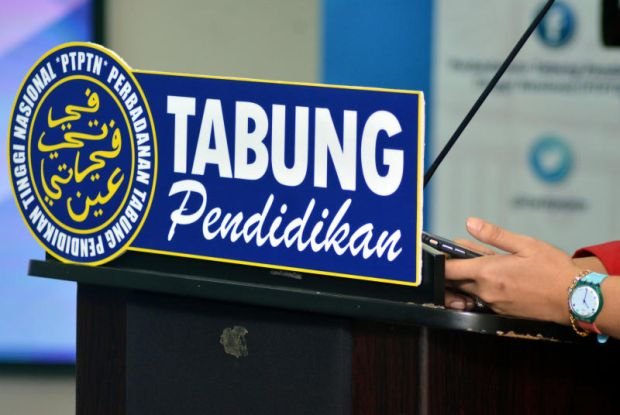25 May 2019
By Philip Golingai
There is nothing wrong with emulating Barisan’s way of collecting debt, if it works.
Someone sent me a screenshot tweet by a Pakatan Harapan leader who some on social media say should be the Education Minister.
The politician tweeted: “There should be other mechanisms considered to manage the ballooning #PTPTN debt. If indeed, the recourse is to emulate the BN govt’s previous practice, the least is to begin announcement with a humble apology, and concede failure in fulfilling our pledge.”

The hashtag #PTPTN refers to the National Higher Education Fund Corporation (PTPTN).
When I checked the MP’s Twitter timeline, that tweet was deleted. There were trails of it as Twitterers responded to the politician’s tweet.
I’m not sure why it was deleted. Perhaps, as an afterthought, it was politically incorrect to praise Barisan Nasional (BN).
That someone also sent me a link to a report in The Star that appeared on the same day as the Pakatan MP’s tweet.
The article was about former higher education minister Datuk Seri Idris Jusoh saying that Pakatan should stick to Barisan’s formula to collect PTPTN debts.
Idris, who is Barisan’s MP for Besut, said the former government’s formula was effective in collecting the arrears.
According to him, the PTPTN’s collection increased from RM700mil in 2014 to RM1.5bil in 2015, followed by RM3.4bil in 2016 and RM4bil in 2017.
“The amount steadily increased until Pakatan took over, when the collection dropped to RM3.3bil,” he said.
That got me curious.
How did Barisan manage to increase the collection? I WhatsApp-ed someone who is a top-ranking officer in the Education Ministry
My contact replied with a 10-point list.
1. They introduced the travel blacklist for loan defaulters. This was a politically challenging and unpopular move but Idris knew it was the only way to get defaulters to pay. He was willing to bear the brunt for PTPTN’s sake.
2. As part of the blacklist, PTPTN increased agents who could facilitate renegotiation with defaulters. Many loans were rescheduled and payments were as low as RM50 a month to get them started. Some repayment plans went up to 15 years. The agents were reminded to facilitate. It was better to have some payment than none.
3. PTPTN also set up a kiosk at KLIA2 so that defaulters could still travel. All they needed to do was pay a minimum amount and then commit to a payment plan.
4. PTPTN also instituted other methods: Internet banking, voluntary employer deductions, etc.
5. Eventually, the combination of blacklist + better engagement saw PTPTN go from less than RM1bil collections in 2013 to RM4bil by the end of 2017. PTPTN was on track to collect RM4.5bil in 2018. We knew what happened after May.
6. From averaging RM300mil per month in collections, it has now dropped to less than RM100mil per month.
7. PTPTN also stepped up its SSPN savings scheme to encourage parents to save from the day their children are born. This would have added RM500mil-RM700mil to PTPTN yearly.
8. It would mean that by 2018 or 2019, PTPTN would have finally reached surplus.
9. Unfortunately, PTPTN/education loans are a politically charged issue. But if level-headed minds prevailed, Barisan’s approach was the way to go. Idris is a technocrat. He was willing to do the unpopular to ensure PTPTN didn’t go belly up.
10. Pakatan promised free education and then said that the minimum PTPTN repayment would be RM4,000. When they removed the blacklist, the defaulters stopped paying. Politicians tried to defend the defaulters, but “punished” the good ones who pay and reward defaulters’ attitude of not paying.
I, too, feel that we are rewarding those who Prime Minister Tun Dr Mahathir Mohamad deemed “untrustworthy”.
Dr Mahathir said the PTPTN loan defaulters – who refused to pay their loans although they were able to do so – were damaging their reputation and their community.
“We have accumulated RM36bil in PTPTN loans. I am ashamed, but they are not,” he said in a report in The Star on Sept 20 last year.
One out of five PTPTN borrowers, according to National Higher Education Fund Corporation chairman Wan Saiful Wan Jan, did not attempt to repay their loan.
Wan Saiful said they made up 19% of borrowers while 32% were inconsistent in paying their loan.
Currently, he said PTPTN’s debt was RM40bil.
In its 100-day manifesto, Pakatan promised to postpone PTPTN loan repayments to all graduates earning below RM4,000 a month.
It later found that its promise was impractical. It reduced it to RM2,000 salary.
The Pakatan Cabinet, according to The Star report, also decided that deductions could range from 2% to 15% of the borrower’s salary.
A borrower whose monthly salary is RM2,000 would have to pay RM40 per month while those earning RM8,000 would need to fork out RM1,200.
Those who could afford to pay their PTPTN loan should pay. They have the moral obligation to repay it so there’s enough funds for future borrowers.
If indeed the Barisan formula worked, Pakatan should emulate it.
Source: www.thestar.com.my
Site Search
Did you find what you are looking for? Try out the enhanced Google Search: